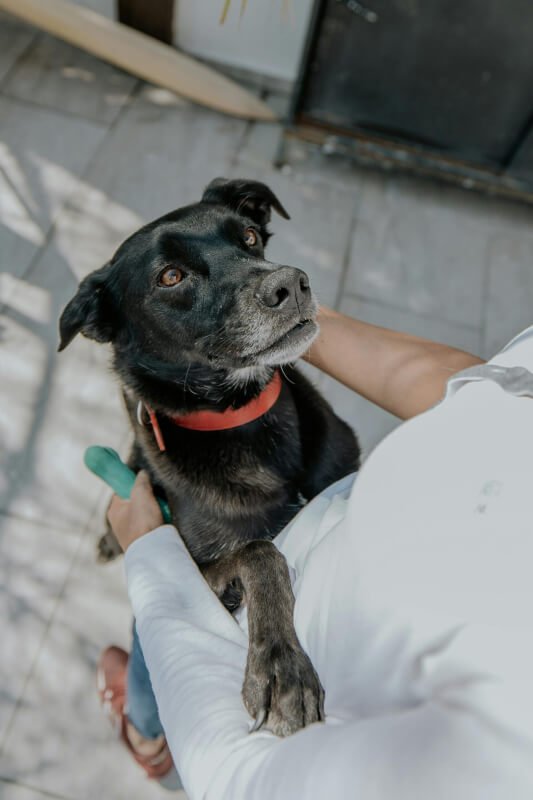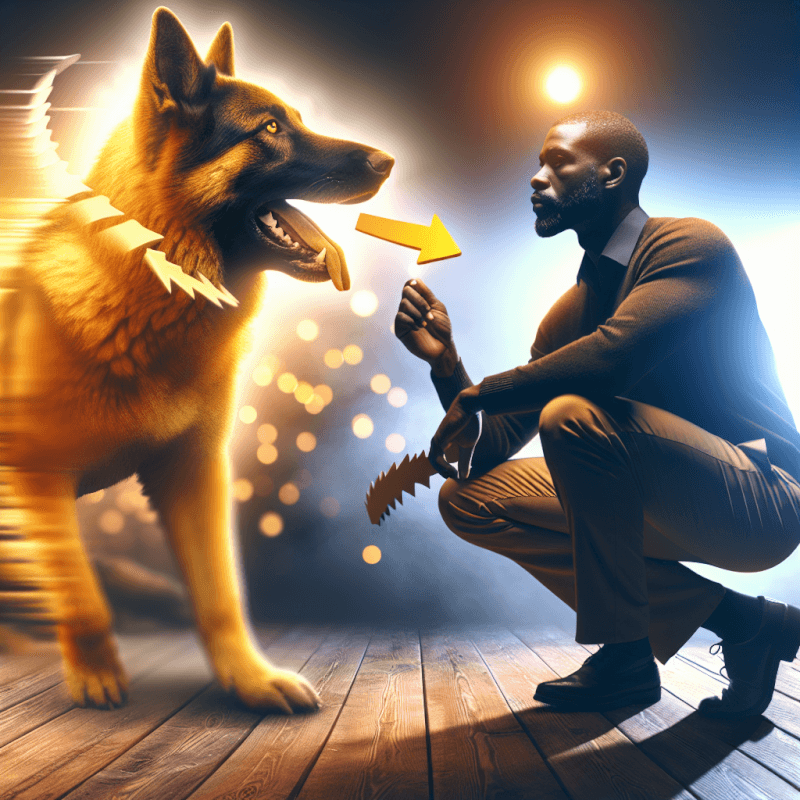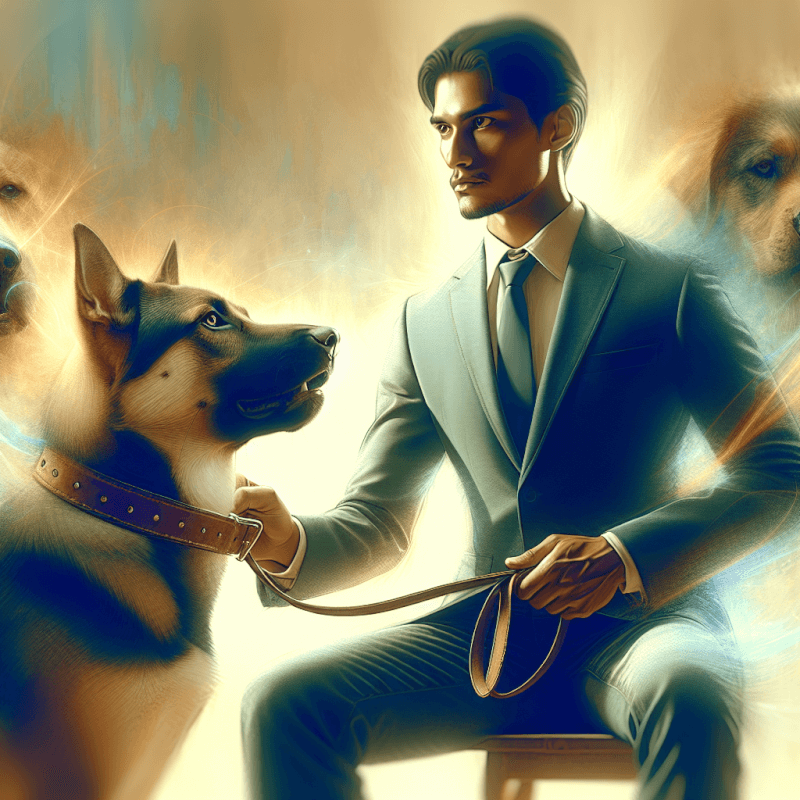If you find yourself in the tricky situation of dealing with a dog that exhibits aggressive behavior, you’re not alone. Many dog owners face this challenge and often wonder how to address it effectively. Fortunately, there are dog training options available near you that can help tackle aggressive behavior head-on. Whether it’s leash aggression, territoriality, or fear-based aggression, professional trainers can offer valuable guidance and techniques to modify your dog’s behavior and create a harmonious environment for both you and your furry friend. With the right training, you’ll be able to better understand your dog’s needs and build a stronger bond together.

Understanding Aggressive Behavior in Dogs
Aggressive behavior in dogs can be concerning and even dangerous, but it is important to remember that it is not an uncommon issue. There are various types of aggression that dogs can display, and understanding these different types is essential in addressing the problem effectively.
Ready for Cat Trivia?
Test your knowledge about cats!

Types of Aggression in Dogs
- Territorial aggression: This type of aggression occurs when a dog feels the need to protect its territory. It may bark, growl, or even bite when someone or something intrudes on its perceived space.
- Fear aggression: Dogs that display fear aggression may act out aggressively when they feel threatened or scared. This can happen in response to specific triggers, such as loud noises or unfamiliar people.
- Resource guarding: Dogs with resource guarding aggression may become possessive and aggressive over food, toys, or other objects they consider valuable. They may growl, snap, or bite to protect their possessions.
- Predatory aggression: Some dogs may display aggression when in pursuit of prey. They may exhibit chasing, lunging, or biting behaviors when they see small animals or even moving objects like bicycles.
- Redirected aggression: When a dog is unable to reach its intended target, it may redirect its aggression towards something or someone else nearby. This can happen when a dog is restrained or prevented from reaching the source of its frustration.
Causes of Aggressive Behavior
Aggressive behavior in dogs can stem from a variety of factors. It is crucial to identify the underlying cause in order to effectively address the issue. Here are some common causes of aggressive behavior in dogs:
- Poor socialization: Dogs that have not been properly socialized during their critical developmental period may be more prone to aggression. This lack of exposure to various people, animals, and environments can lead to fear or mistrust.
- Fear and anxiety: Dogs that experience chronic fear or anxiety may exhibit aggressive behaviors as a defense mechanism. Anxiety disorders, previous traumatic experiences, or phobias can contribute to this type of aggression.
- Pain and medical conditions: Dogs experiencing pain or discomfort from medical conditions may display aggression as a result. It is important to rule out any underlying health issues that could be contributing to the aggressive behavior.
- Lack of training and leadership: Dogs that have not received proper training or clear leadership from their owners may develop aggressive tendencies. A lack of structure and consistent boundaries can result in a dog feeling insecure and in need of taking control.
- Genetics and breed traits: Some dog breeds are more prone to aggression due to genetic predispositions. However, it is important to note that breed does not solely dictate a dog’s behavior, and individual temperament and environmental factors play significant roles.
Importance of Addressing Aggression
Addressing aggression in dogs is of utmost importance for the safety and well-being of everyone involved. Untreated aggression can escalate over time, leading to more frequent and severe incidents. It is crucial to seek professional help to address these behaviors and prevent potential harm.
Finding Professional Dog Trainers
When it comes to addressing aggressive behavior in dogs, finding the right professional dog trainer is essential. These experts have the knowledge and skills to guide both you and your dog through the training process. Here are some steps to help you find a reliable and qualified dog trainer near you.
Researching Local Dog Trainers
Start your search for professional dog trainers by researching local options in your area. Look for trainers who specialize in behavior modification or aggression training. Check online directories, ask friends or family for recommendations, and consult with your veterinarian for referrals.
Checking Credentials and Certifications
Once you have a list of potential trainers, take the time to check their credentials and certifications. Look for trainers who have received formal education in dog training or behavior modification. Certifications from reputable organizations such as the Certification Council for Professional Dog Trainers (CCPDT) can also serve as an indicator of a trainer’s expertise.
Reading Reviews and Testimonials
To get a better understanding of a trainer’s reputation and effectiveness, read reviews and testimonials from past clients. Look for trainers who have a track record of successfully addressing aggressive behavior in dogs. Positive feedback and success stories can provide valuable insight into a trainer’s capabilities.
Consulting Veterinary Recommendations
Your veterinarian can be a valuable resource when searching for a professional dog trainer. They can provide recommendations based on their knowledge of your dog’s behavior and health history. Veterinarians often work closely with reputable trainers and behaviorists, making their recommendations highly reliable.
Choosing the Right Dog Trainer
Choosing the right dog trainer for your dog’s aggressive behavior requires careful consideration. Not all trainers are created equal, and it is crucial to find someone who aligns with your goals and values. Consider the following factors when making your decision.
Evaluating Training Methods
Different trainers employ various training methods, so it is important to evaluate their techniques and determine if they align with your philosophy. Look for positive reinforcement-based training methods that focus on rewarding desired behaviors rather than punishing unwanted ones. Avoid trainers who rely heavily on aversive training tools or harsh punishment.
Considering Specialization in Aggression Training
Aggression training requires specialized knowledge and expertise. When choosing a trainer, look for individuals who have specific experience and success in addressing aggressive behavior in dogs. They should have a proven track record of helping dogs overcome aggression issues.
Assessing Experience and Expertise
Experience counts when it comes to dealing with aggressive behavior in dogs. Look for trainers who have been working in the field for a substantial amount of time and have dealt with a variety of aggression cases. Experienced trainers are more likely to have encountered similar situations and developed effective strategies.
Discussing Training Techniques
Before committing to a particular trainer, take the time to discuss their training techniques and approach. A trainer should be open to answering your questions and addressing any concerns you may have. Clear communication and a shared understanding of the training process are crucial for a successful training journey.
Initial Assessment and Consultation
Once you have chosen a professional dog trainer, the next step is the initial assessment and consultation. This phase allows the trainer to evaluate your dog’s behavior, identify triggers, and discuss training goals. This information will serve as the foundation for developing a customized training plan.
Evaluation of Dog’s Behavior
During the initial assessment, the trainer will carefully observe and evaluate your dog’s behavior. They will look for signs of aggression, fear, anxiety, or any other behavioral issues. Understanding the root causes of the aggression will help the trainer develop an appropriate training approach.
Identifying Triggers and Patterns
Identifying the specific triggers and patterns that lead to your dog’s aggressive behavior is crucial. Triggers can vary from dog to dog and may include specific objects, sounds, or situations. By identifying these triggers, the trainer can develop strategies to desensitize your dog and modify their response.
Discussion of Training Goals
During the consultation, you and the trainer will discuss your training goals. This can include specific behaviors you want to address, such as resource guarding or fear aggression. Clear communication about your expectations will ensure that the training plan is tailored to your dog’s needs.
Determining Realistic Expectations
It is important to establish realistic expectations for the training process. Aggressive behavior cannot be completely eliminated overnight, and progress may vary from dog to dog. The trainer will discuss the timeframe for achieving behavioral changes and provide guidance on what is realistic to expect.

Creating a Customized Training Plan
After the initial assessment and consultation, the trainer will create a customized training plan tailored to your dog’s specific needs. This plan will outline the behavioral objectives, training techniques, and milestones to track progress throughout the training process.
Establishing Behavioral Objectives
The training plan will clearly define the desired behavioral objectives for your dog. These objectives may include reducing aggression towards specific triggers, increasing calm behavior, or improving obedience commands. Clear objectives provide a roadmap for the training process.
Implementing Positive Reinforcement Techniques
Positive reinforcement is a key component of effective dog training, especially when addressing aggressive behavior. The trainer will utilize rewards, such as treats, toys, or praise, to reinforce desired behaviors. By focusing on positive reinforcement, your dog will learn to associate good behavior with pleasant outcomes.
Addressing Specific Aggressive Behaviors
The training plan will outline strategies for addressing your dog’s specific aggressive behaviors. This may involve counterconditioning techniques to change your dog’s emotional response to triggers or desensitization exercises to reduce reactivity. The training plan will be tailored to address the underlying causes of aggression.
Setting Gradual Training Milestones
To track progress and ensure that training stays on schedule, the plan will include gradual milestones. These milestones will help break down the training process into manageable steps and provide a sense of accomplishment as your dog achieves each goal. Celebrating these milestones will keep both you and your dog motivated throughout the training.
Training Sessions and Techniques
With the training plan in place, the actual training sessions can begin. Professional dog trainers will use various techniques and exercises to modify your dog’s behavior and build new, positive habits.
Socialization and Deterrence Methods
Socialization is crucial in addressing aggressive behavior in dogs. The trainer may introduce controlled socialization exercises to gradually expose your dog to new people, animals, and environments. Deterrence methods, such as interrupting unwanted behavior and redirecting focus, can also be implemented to discourage aggression.
Desensitization and Counterconditioning
Desensitization and counterconditioning techniques are commonly used to modify aggressive behavior. The trainer will help your dog develop a positive association with previously fear-inducing triggers through gradual exposure and rewarding calm behavior. This process helps change your dog’s emotional response to triggers, reducing the likelihood of aggression.
Obedience Training and Command Responses
Obedience training is an essential component of addressing aggression in dogs. The trainer will work with you and your dog to improve obedience commands, such as sit, stay, and recall. Teaching your dog to respond reliably to commands provides a way to redirect their attention and manage their behavior.
Safety Measures during Training
Aggressive behavior can be unpredictable, which is why safety measures should be implemented during training sessions. The trainer will provide guidance on using proper equipment, such as secure leashes and muzzles if needed. Additionally, they will teach you how to read your dog’s body language and ensure a safe training environment.

Owner Involvement and Commitment
Successful training requires active involvement and commitment from the dog owner. The following factors are crucial for achieving long-term behavioral changes and maintaining progress.
Understanding the Role of the Owner
As the owner, your role in the training process is vital. It is important to understand that training is not just about changing your dog’s behavior but also about developing a strong bond and communication between you and your dog. By actively participating in the training sessions, you will be better equipped to reinforce positive behaviors.
Consistency and Reinforcement at Home
Consistency is key to reinforcing your dog’s training. It is essential to maintain a consistent approach in implementing the training techniques and commands taught by the trainer. Reinforcing these behaviors at home through consistent rewards and clear expectations helps solidify the training progress.
Practice and Repetition of Training Exercises
Practice makes perfect when it comes to dog training. The trainer will provide you with exercises and techniques to practice regularly with your dog. Consistent practice and repetition help reinforce the desired behaviors and make them more reliable. Make training a part of your daily routine to maximize progress.
Importance of Patience and Perseverance
Addressing aggression in dogs takes time and patience. It is important to remain calm and patient throughout the training process. There may be setbacks and challenges along the way, but with perseverance and consistency, your dog can make progress. Celebrate small victories and keep a positive attitude to support your dog’s learning.
Behavioral Progress Evaluation
Regular evaluation of your dog’s behavioral progress is crucial to ensure that training techniques are effective and adjustments can be made if necessary.
Tracking Improvement and Positive Changes
The trainer will help you track and evaluate your dog’s improvement over time. By monitoring their responses to triggers and assessing general behavior, you can see the positive changes that have occurred. Celebrating these improvements will keep you motivated and reinforce the effectiveness of the training.
Modifying Training Techniques as Necessary
Not all dogs respond the same way to training techniques. If a particular approach is not yielding the desired results, the trainer will modify the techniques accordingly. Each dog is unique, and the training plan should be flexible to adapt to your dog’s individual needs.
Addressing Setbacks and Challenges
Training is a learning process, and setbacks or challenges may arise. It is important to communicate openly with the trainer about any difficulties you encounter and to follow their guidance in addressing them. The trainer will help you navigate through setbacks, providing support and guidance for overcoming challenges.
Seeking Professional Guidance when Needed
If you encounter difficulties or your dog’s aggressive behavior does not improve significantly, it may be necessary to seek additional professional guidance. Consulting with a canine behaviorist or returning to the trainer for further assistance can help address any persistent issues and ensure progress continues.

Long-Term Management of Aggressive Behavior
Even after significant improvements, it is important to maintain a long-term management plan to prevent the reemergence of aggressive behavior.
Recognizing Warning Signs and Triggers
Continued awareness of your dog’s behavior is essential for long-term management. Recognize any warning signs or triggers that may lead to aggressive behavior. By avoiding or managing these situations, you can prevent the escalation of aggression.
Continuing Training and Reinforcement
The training process does not end once initial behavior improvements are achieved. Continual training and reinforcement of learned behaviors are essential for maintaining progress. Regular training sessions, practice of commands, and positive reinforcement should be continued to ensure long-term success.
Maintaining a Structured Environment
Maintaining a structured environment is key for managing aggressive behavior. Establish consistent rules and boundaries for your dog, providing them with a sense of security and predictability. Having a structured routine and clear expectations helps reduce anxiety and prevent potential triggers.
Implementing Safety Measures at Home
To ensure the safety of everyone involved, it may be necessary to implement safety measures at home. This can include safely confining your dog when guests are present or providing a secure space where your dog can retreat when feeling overwhelmed. Consult with the trainer for specific recommendations based on your dog’s behavior.
Support Groups and Resources
Support groups and resources can provide valuable assistance and guidance throughout the training process. Consider the following options:
Local Dog Training Classes and Workshops
Local dog training classes and workshops can be a great resource for owners of dogs with aggressive behavior. These group settings provide opportunities for controlled socialization while learning from experienced trainers and interacting with other dog owners facing similar challenges.
Online Communities and Forums
Online communities and forums dedicated to dog training and behavior can offer a wealth of information and support. Engaging with fellow dog owners and professionals in these communities can provide insights, success stories, and tips to help manage your dog’s aggression.
Consultation with Canine Behaviorists
In some cases, consulting with a licensed canine behaviorist may be necessary for complex or severe aggression issues. Canine behaviorists have advanced knowledge and expertise in the field and can provide specialized guidance specific to your dog’s needs. Your trainer may be able to recommend a reputable behaviorist for further consultation.
Books and Publications on Dog Behavior
There are a wide array of books and publications available on dog behavior and training. These resources can provide in-depth knowledge and practical strategies for addressing aggressive behavior in dogs. Look for reputable authors and publications that focus on positive reinforcement and force-free training methods.
In conclusion, understanding and addressing aggressive behavior in dogs is crucial for the safety and well-being of both the dog and its surroundings. Finding a professional dog trainer who specializes in aggression training, designing a customized training plan, and involving the owner actively are key steps in addressing this issue. Through consistent training, positive reinforcement, and ongoing management, dogs with aggressive behavior can develop new, more appropriate behaviors, allowing them to live happy and fulfilling lives.



